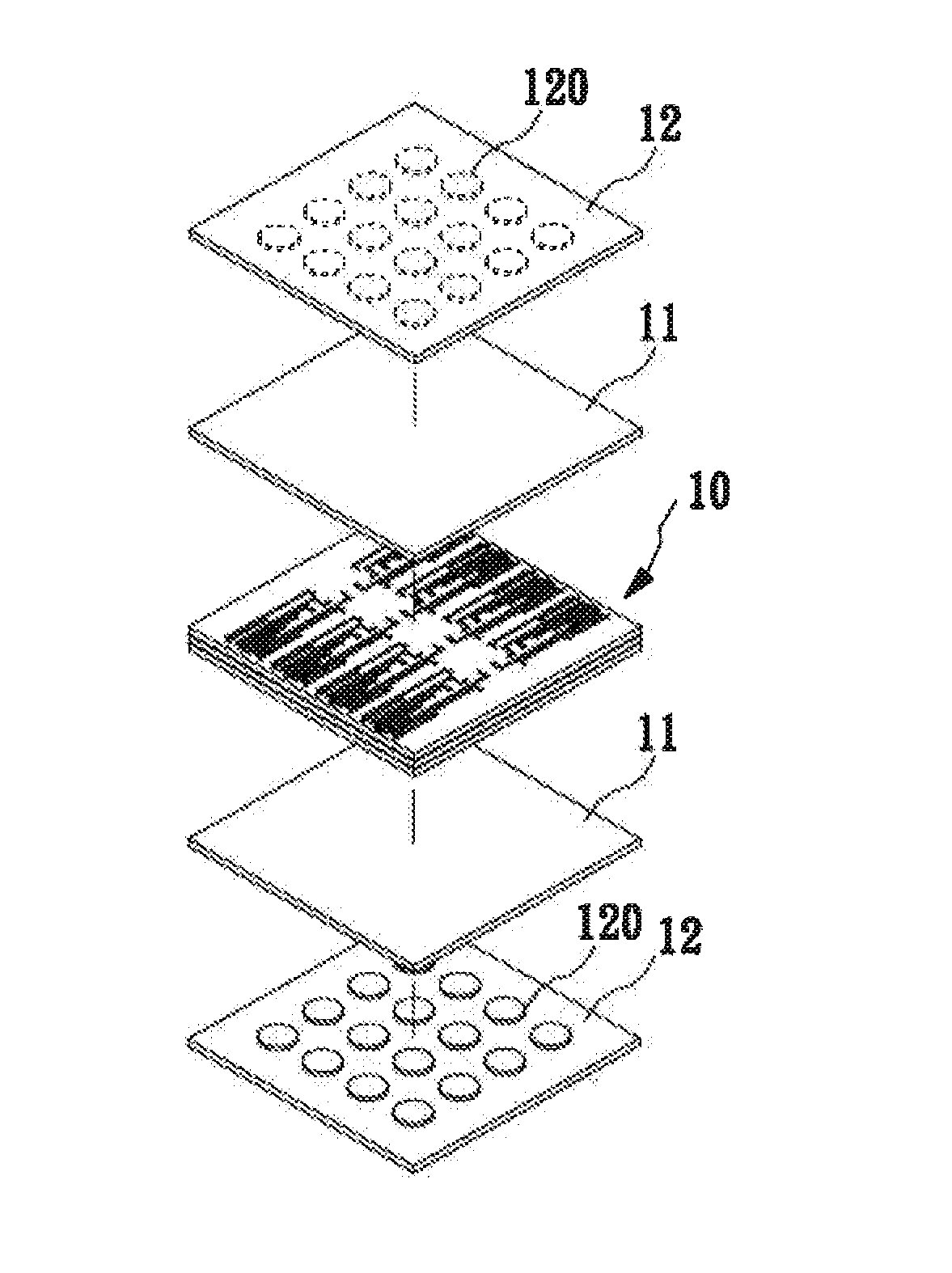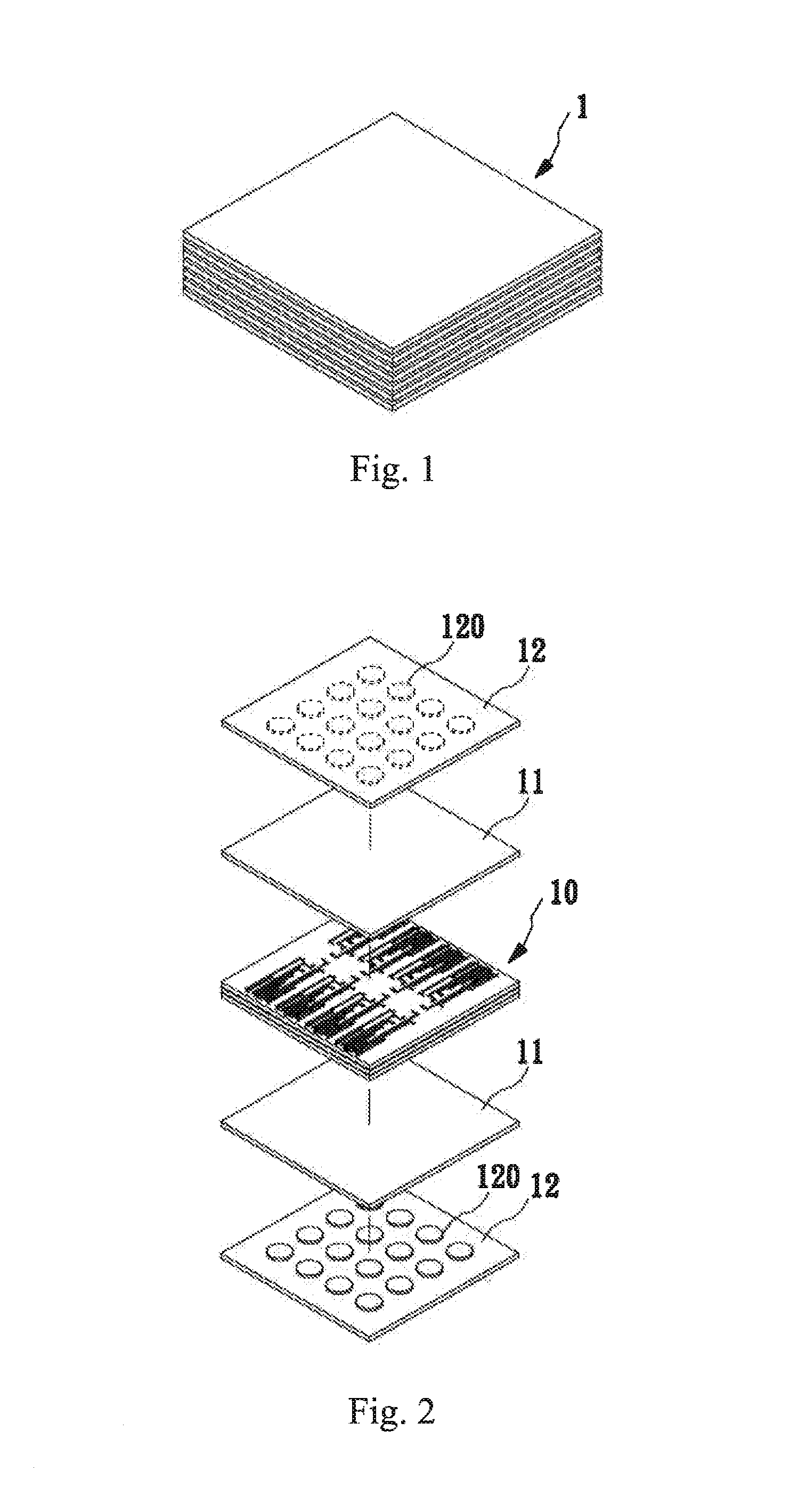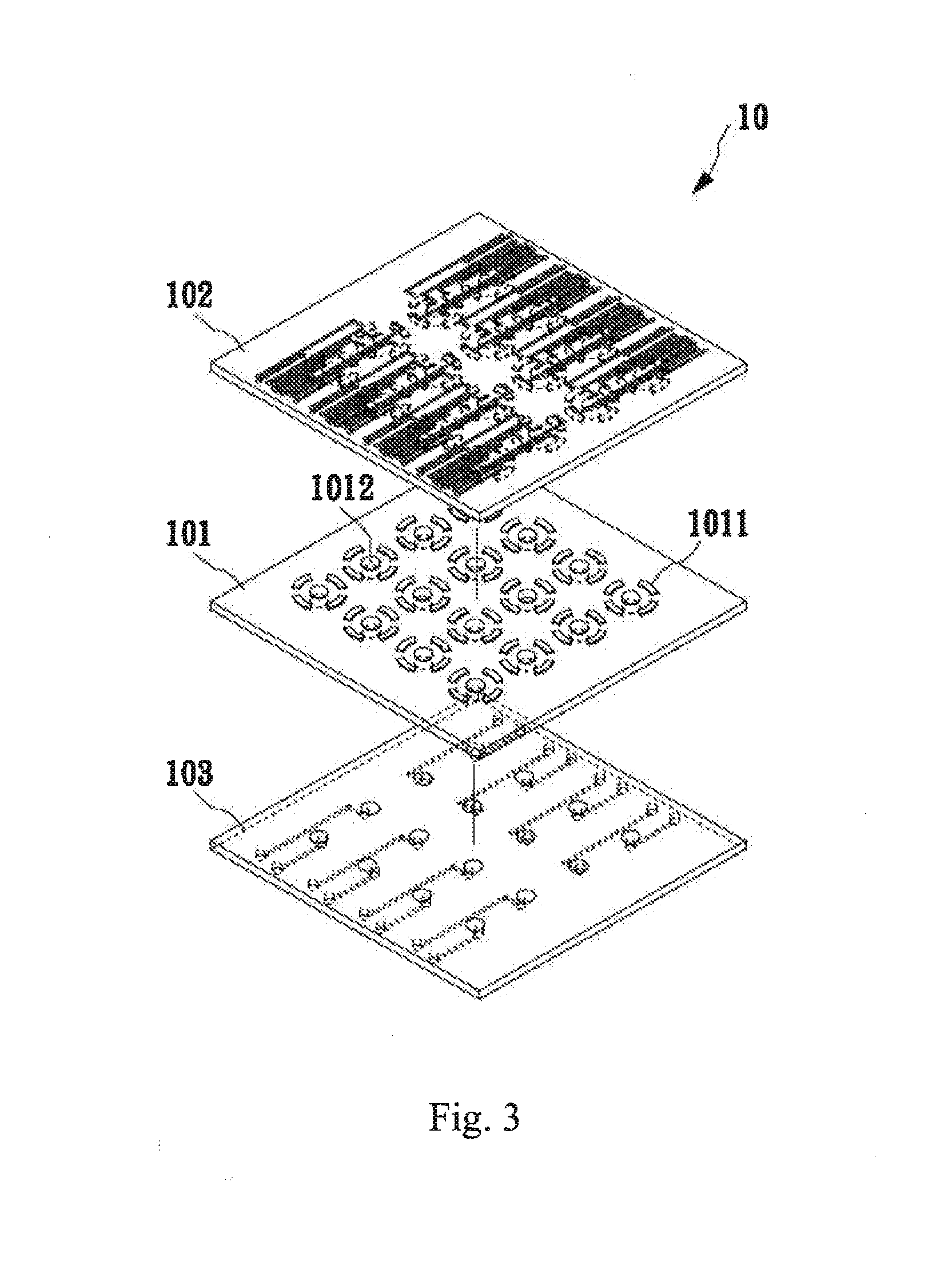Triaxial piezoelectric sensor
a piezoelectric sensor and triaxial technology, applied in the field of piezoelectric sensors, can solve the problems of limited use, fragility and structural damage, heavy weight, and hard piezoelectric materials, and achieve the effect of high sensitivity
- Summary
- Abstract
- Description
- Claims
- Application Information
AI Technical Summary
Benefits of technology
Problems solved by technology
Method used
Image
Examples
first embodiment
[0036]Please refer to FIG. 1 to FIG. 3. FIG. 1 is a triaxial piezoelectric sensor 1. A major sensing function of the triaxial piezoelectric sensor 1 is achieved when the sensor body 10 in the triaxial piezoelectric sensor 1 is deformed to generate an electrical signal. Please refer to FIG. 3; the sensor body 10 comprises a Polyvinylidene (PVDF) layer 101, a first line layer 102, and a second line layer 103, wherein the PVDF layer 101 is located between the first line layer 102, and the second line layer 103.
[0037]Please refer to FIG. 4A to FIG. 4D, which explain details of the PVDF layer 101. FIG. 4A illustrates a top view of the PVDF layer 101, FIG. 4B illustrates a lateral view of the PVDF layer 101, FIG. 4C illustrates a bottom view of the PVDF layer 101, and FIG. 4D illustrates the polarized directions on the dashed portion indicated in FIG. 4B. As indicated in FIG. 4A, first electrodes 1011 are located in an upper surface of the PVDF layer 101. FIG. 4C illustrates that second e...
second embodiment
[0043]In the second embodiment, the first line layer 702 and the second line layer 703 are substantially the same but only different in the opposed upper surface and bottom surface. Such an arrangement helps simplify the manufacturing process. FIG. 10A-10C respectively illustrate an upper surface, a lateral surface, and a bottom surface of the first line layer. The first line layer 702 has a plurality of first electrodes 7021 located in a bottom surface of the first line layer 702 and has a plurality of first signal lines 7022 located in an upper surface of the first line layer 702.
[0044]Because the line layer 702 and the second line layer 703 are substantially the same but only different in the opposed upper surface and bottom surface, it is proper to use FIG. 10A-10C for also illustrating the second line layer 703. For brevity, FIG. 10A-10C are also used for illustrating a bottom surface, a lateral surface, and an upper surface of the second line layer 703. The second line layer 7...
third embodiment
[0052]In the third embodiment, the third line layer 132 for the second sensor body 13a is substantially the same as the fourth line layer 133a, only having opposite upper and bottom surfaces. FIG. 16A-16C respectively illustrate an upper surface, a lateral surface, and a bottom surface of the third line layer. The third line layer 132a has a plurality of third electrical connection portions 1321a located in a bottom surface of the third line layer 1321a and has a plurality of third signal lines 1322a located in an upper surface of the third line layer 1321a.
[0053]Because the third line layer 132a of the third embodiment is substantially the same as the fourth line layer 133a, only having opposite upper and bottom surfaces, FIG. 16A-16C are also used for illustrating the fourth line layer 133a. For brevity, FIG. 16A-16C are used for illustrating a bottom surface, a lateral surface, and an upper surface of the fourth line layer 133a. The fourth line layer 133a has a plurality of four...
PUM
 Login to View More
Login to View More Abstract
Description
Claims
Application Information
 Login to View More
Login to View More - R&D
- Intellectual Property
- Life Sciences
- Materials
- Tech Scout
- Unparalleled Data Quality
- Higher Quality Content
- 60% Fewer Hallucinations
Browse by: Latest US Patents, China's latest patents, Technical Efficacy Thesaurus, Application Domain, Technology Topic, Popular Technical Reports.
© 2025 PatSnap. All rights reserved.Legal|Privacy policy|Modern Slavery Act Transparency Statement|Sitemap|About US| Contact US: help@patsnap.com



